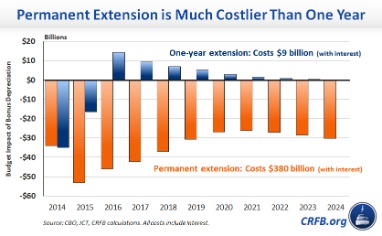Quick Ratio: How to Calculate & Examples

It is essential to note that while the quick ratio is a significant financial metric, it should not be the only factor used to assess a company’s financial health. Other financial ratios, such as Current Ratio, Debt-to-Equity Ratio, and Gross Profit Margin, should also be considered to understand a company’s financial performance better. A high quick ratio, one that is over 1.0, suggests that your company has solid cash flow and is in a good financial position. A low quick ratio, one that is under 1.0, may reflect problems your company is having covering current expenses and maintaining an adequate cash flow. Therefore, a quick ratio gives business owners, financial institutions, investors, and other stakeholders an idea of how easily the business could pay short-term liabilities if it had to do so quickly. The quick ratio is similar to the current ratio, the difference being the quick ratio excludes inventory from its calculation.
The quick ratio typically excludes prepaid expenses and inventory from liquid assets. Prepaid expenses aren’t included because the cash can’t be used to pay off other liabilities. Because this ratio seeks to tell how well a company can pay off immediate or pressing debts, inventory isn’t a reliable source. The quick ratio measures the company’s short-term capital by comparing its cash balance and current assets with its near-term obligations. The quick ratio, also known as the “acid-test ratio”, is different from the current one because it uses a stricter criterion to calculate current assets. Let’s understand the simplest formulas for calculating the quick ratio in this guide, as it plays an important plan in making a business plan.
Quick Ratio Formula With Examples, Pros and Cons - Investopedia
Quick Ratio Formula With Examples, Pros and Cons.
Posted: Fri, 31 Mar 2023 07:00:00 GMT [source]
Whereas, the current ratio, considers inventory and prepaid expense assets. Therefore, a quick ratio much smaller than the current ratio reflects that a large portion of current assets is in inventory. A quick ratio analysis interpretation tells us whether a company has enough liquid assets that can be converted into cash to settle its current liabilities. The ratio would measure the dollar amount of available liquid assets of the company against the dollar amount of the company’s current liabilities.
What is the Quick Ratio Formula?
For example, a quick ratio of 1.8 can be interpreted as a business having $1.8 of liquid assets that are available to pay off each $1 of its current liabilities. Whether you’re an investor, a creditor, or a company executive, understanding the quick ratio can provide critical insights into a company’s short-term financial health. The comparative study of a quick ratio for FY 16 & 17 suggests that the quick ratio of Reliance Industries declined from 0.47 to 0.44. This indicates that the short-term liquidity position of Reliance Industries is bad, and hence it cannot pay off its current liabilities with the quick assets. It also makes sense to look at the contribution weightage of each asset in the overall quick assets.
The quick ratio can be used to analyze a single company over a period of time or can be used to compare similar companies. By maintaining a solid liquidity position, a company can avoid potential financial difficulties, such as cash flow shortages and missed payments, that could negatively impact profitability. Additionally, a strong liquidity position can enable a company to take advantage wave invoicing on the app store of opportunities for growth and investment, which can ultimately lead to increased profitability. While the quick ratio is a valuable metric for evaluating a company’s short-term liquidity, it is essential to consider its long-term financial health. A company with a high quick ratio may not be in good financial health if it has high debt levels or is experiencing declining profitability.
What Is the Quick Ratio? Definition and Formula
Another commonly used liquidity ratio is the current ratio, calculated as Current Assets divided by Current Liabilities. Unlike the quick ratio, it includes all current assets—including inventory—in the calculation. Therefore, the current ratio could provide a more lenient view of a company’s liquidity compared to the quick ratio.
Quick ratio is calculated as (Current Assets - Inventory) / Current Liabilities. The quick ratio compares current liabilities (not considering inventory) with current liabilities. The quick ratio is calculated using the formula (Current Assets - Inventory) / Current Liabilities. For an item to be classified as a quick asset, it should be quickly turned into cash without a significant loss of value.
Quick ratios are a type of liquidity ratio that measures the ability of a company to meet its short-term liabilities with its near cash or most liquid assets. Therefore, the most liquid items in a company include cash, cash equivalents, marketable securities and accounts receivable. The majority of the quick assets of companies are mostly kept in form of cash and short-term investments (marketable securities) to pay off their immediate financial obligations that are due in one year. This means it can pay its current obligations 5.5 times more using its most liquid assets. A ratio of 1 means that a business has sufficient cash or cash equivalents to pay its short-term financial obligations.
Changes in Capital Expenditures - Factors Causing a Company’s Quick Ratio to Fluctuate
Raising capital through equity or debt financing may be difficult if a company has a low quick ratio. Investors and lenders may view a low quick ratio as a sign of financial weakness and hesitate to invest in the company. Analysts and investors typically look at industry benchmarks and historical trends to determine a “good” quick ratio for a particular industry. These benchmarks may be based on publicly available financial data or surveys of industry participants. Company management uses the quick ratio to evaluate the company’s liquidity and identify potential areas for improvement.
Acid-Test Ratio: Definition, Formula, and Example - Investopedia
Acid-Test Ratio: Definition, Formula, and Example.
Posted: Mon, 24 Jul 2017 09:58:07 GMT [source]
Whether a company has to pay back a loan or settle an invoice from a supplier, its quick ratio can reveal if it’s equipped to do so. From the above calculation, it is clear that the short-term liquidity position of Reliance Industries is not good. Reliance Industries has 0.44 INR in quick assets for every 1 INR of current liabilities. The quick ratio of company XYZ is 1.2, which means company XYZ has $1.2 of quick assets to pay off $1 of its current liabilities. The quick ratio is a formula and financial metric determining how well a company can pay off its current debts. Accountants and other finance professionals often use this ratio to measure a company’s financial health simply and quickly.
What is a Quick Ratio?
In other words, a company shouldn’t incur a lot of cost and time to liquidate the asset. For this reason, inventory is excluded in quick assets because it takes time to convert into cash. Like your assets, you’ll only want to include your current liabilities when calculating the quick ratio.
- The quick ratio, also called an acid-test ratio, measures a company’s short-term liquidity against its short-term obligations.
- However, in as much as this ratio is a good test for the viability of business entities, it may not give a complete insight into the overall health of the business.
- An increase in quick ratio can be due to various reasons, including an increase in cash and cash equivalents, a reduction in current liabilities, or a decrease in inventory levels.
- For an item to be called a quick asset, it should be quickly converted to cash without significant value loss.
- Investors and lenders can also be interested in examining it, as a tool in a business’s financial management.
Your ratio can tell you how well your business can pay its short-term liabilities by having assets that are readily convertible into cash. A higher quick ratio can also give a company more flexibility in taking on new opportunities or weathering unexpected financial challenges. With a higher quick ratio, a company may have a better chance of obtaining financing on more favorable terms or negotiating better payment terms with suppliers.
A current ratio tells you the relationship of your current assets to current liabilities. The ratio looks at more types of assets than the quick ratio and can include inventory and prepaid expenses. The quick ratio is the barometer of a company’s capability and inability to pay its current obligations. Investors, suppliers, and lenders are more interested to know if a business has more than enough cash to pay its short-term liabilities rather than when it does not.
Suppliers use the quick ratio to evaluate a company’s ability to pay its bills on time. By analyzing a company’s quick ratio, suppliers can determine whether a company has sufficient liquidity to make timely payments for goods and services. Creditors, such as banks or other lenders, use the quick ratio to evaluate a company’s ability to repay its debts. By looking at a company’s quick ratio, creditors can determine whether it has sufficient liquidity to pay its loans and other financial obligations. In this example, the quick ratio is 1, which means that the company’s liquid assets can cover its short-term liabilities once.

This means the business has $1.10 in quick assets for every $1 in current liabilities. The quick ratio is calculated by adding cash, cash equivalents, short-term investments, and current receivables together then dividing them by current liabilities. Otherwise referred to as the “acid test” ratio, the quick ratio’s distinction from the current ratio is that a more stringent criterion is applied for the current assets included in the calculation.
Example to Calculate Quick Ratio
In addition, the quick ratio is a key metric that lenders and investors use to assess a company’s creditworthiness. A high quick ratio may be a positive indicator that a company is financially stable and able to meet its obligations, which could lead to lower borrowing costs and increased investment interest. Financial institutions will utilize a quick ratio alongside a current ratio to measure a business’s solvency when making loan decisions.
Start Slide Show with PicLens Lite